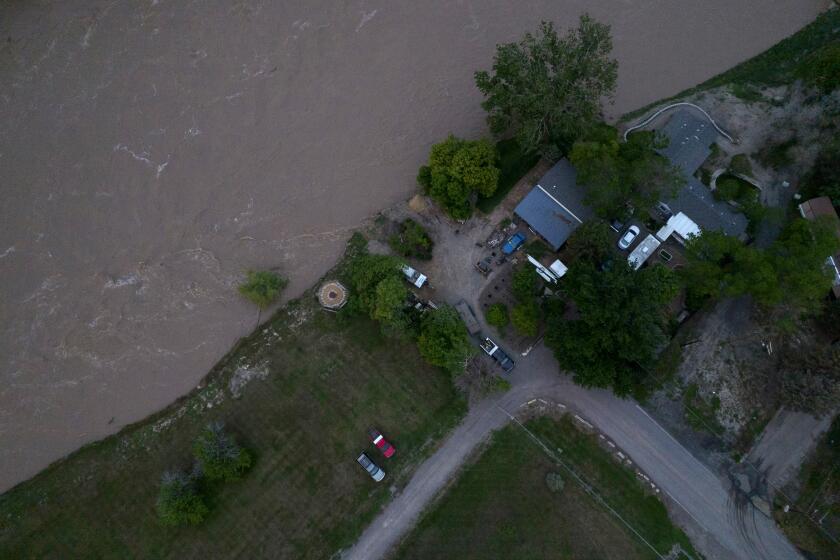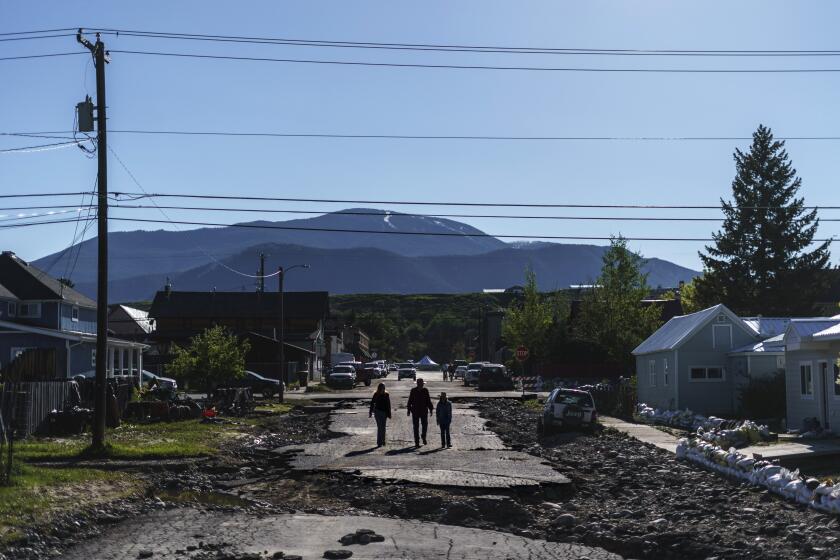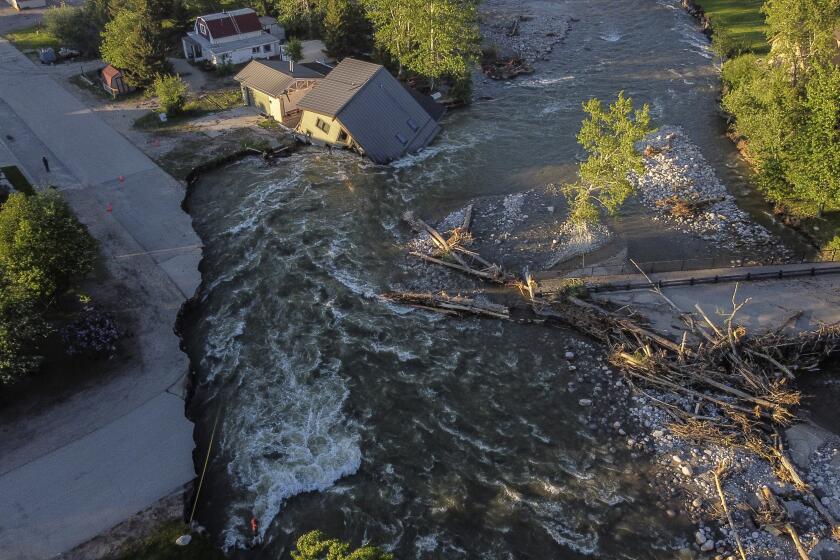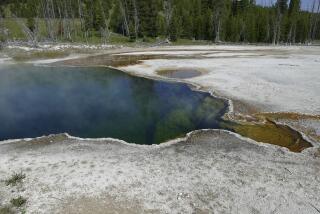Yellowstone Park aims for a quick reopening after floods
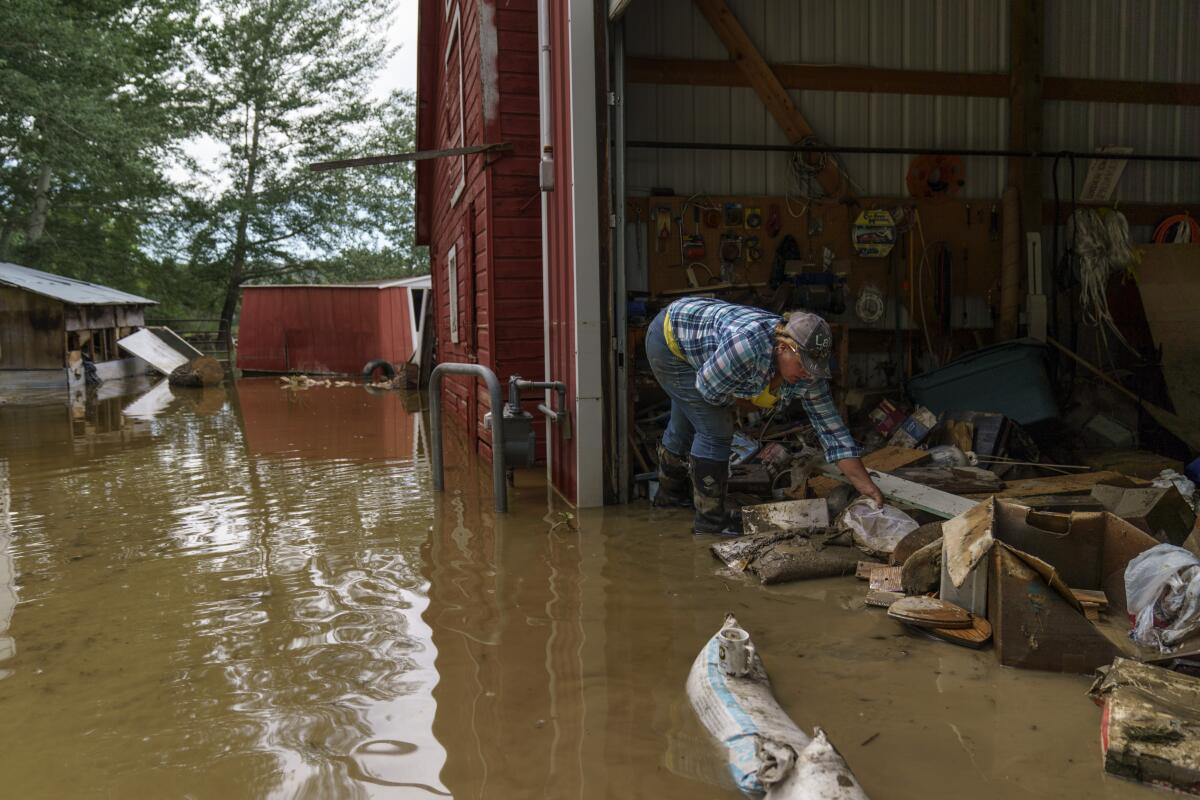
GARDINER, Mont. — Most of Yellowstone National Park should reopen within the next two weeks — much faster than originally expected after record floods pounded the region last week and knocked out major roads, federal officials said.
Yellowstone Superintendent Cam Sholly said the world-renowned park will be able to accommodate fewer visitors for the time being, and it will take more time to restore road connections with some southern Montana communities.
Park officials said Sunday they’ll use $50 million in federal highway money to speed up road and bridge repairs. There’s still no timetable for repairs to routes between the park and areas of Montana where the recovery is expected to stretch for months.
Yellowstone will partly reopen at 8 a.m. Wednesday, more than a week after more than 10,000 visitors were forced out of the park when the Yellowstone and other rivers went over their banks after being swelled by melting snow and several inches of rainfall.
Only portions of the park that can be accessed along its “southern loop” of roads will be opened initially, and access to the park’s scenic backcountry will be for day hikers only.
Within two weeks officials plan to also open the northern loop, after previously declaring that it would probably stay closed through the summer season. The northern loop would give visitors access to popular attractions, including Tower Fall and Mammoth Hot Springs. They’d still be barred from the Lamar Valley, which is famous for its prolific wildlife including bears, wolves and bison that can often be seen from the roadside.
“That would get 75 to 80% of the park back to working,” National Park Service Director Charles “Chuck” Sams said Sunday during a visit to Yellowstone to gauge the flood’s effects.
Floodwaters that swept through Yellowstone National Park may have permanently altered the course of a fishing river and forever changed the landscape.
It will take much longer — possibly years — to fully restore two badly damaged stretches of road that link the park with Gardiner to the north and Cooke City to the northeast.
During a tour of damaged areas on Sunday, park officials showed reporters one of six sections of road near Gardiner where the raging floodwaters obliterated most of the roadway.
Muddy water now courses through where the roadbed had been only a week ago. Trunks of huge trees litter the the surrounding canyon.
With no chances for an immediate fix, Sholly said 20,000 tons of material were being hauled in to construct a temporary, alternative route along an old road that runs above the canyon. That would let employees who work at the park headquarters in Mammoth get to their homes in Gardiner, Sholly said. The temporary route also could be used by commercial tour companies that have permits to lead guided visits.
Amid heavy criticism as flooding ravaged his state, Montana Gov. Greg Gianforte’s office confirmed he was on vacation in Italy with his wife.
“We’ve gotten a lot more done than we thought we would a week ago,” Sholly said. “It’s going to be a summer of adjustments.”
The scope of the damage is still being tallied by Yellowstone officials, but based on other national park disasters, it could take years and carry a steep price tag to rebuild in an environmentally sensitive landscape — with a huge underground plumbing system — where construction season runs only from the spring thaw until the first snowfall.
“They’ll have to look at all the resources the park is designed to protect, and try to do this project as carefully as possible, but they’re also going to try to go fairly quickly,” said Brett Hartl, government affairs director at the Center for Biological Diversity.
Montana counties have been tallying the damage.
Some of those hardest hit in the disaster — far from the famous park’s limelight — are leaning heavily on one another to pull their lives out of the mud.
In and around the agricultural community of Fromberg, the Clarks Fork River flooded almost 100 homes and badly damaged a major irrigation ditch that serves many farms. The town’s mayor says about a third of the flooded homes are too far gone to be repaired.
In Red Lodge, nearly 150 homes were damaged or destroyed after Rock Creek escaped its banks last week.
Towns like Red Lodge that lead to Yellowstone National Park’s northern entrances and rely on tourists passing through could suffer for the rest of the summer.
In Park County — which includes Livingston, Gardiner and Cooke City — a preliminary assessment of 437 structures found three residences were destroyed, 76 had moderate to major damage and an additional 126 had minor damage. Eight bridges and seven roads were destroyed, while 16 commercial buildings suffered moderate to major damage, officials said.
Stillwater County officials were still tallying the damage there on Monday, even as heavy rains hit over the weekend, causing the rivers to rise again, said Rich Cowger, the fire chief in Columbus.
One house at the confluence of Rosebud Creek and the Stillwater River near Absarokee remained threatened Monday, Cowger said.
“If that house goes out, it’s a direct threat to county infrastructure,” he said. People also want to remove logjams upstream, but that could also create downstream problems, he said.
Not far from the riverbank in Fromberg, Lindi O’Brien’s trailer home was raised high enough to avoid major damage. But she got water in her barns and sheds, lost some of her poultry and saw her recently deceased parents’ home get swamped with several feet of water.
Elected officials who showed up to tour the damage in Red Lodge and Gardiner — Montana tourist towns that serve as gateways to Yellowstone — haven’t made it to Fromberg to see its devastation. O’Brien said the lack of attention is no surprise given the town’s location away from major tourist routes.
She’s not resentful but resigned to the idea that if Fromberg is going to recover, its roughly 400 residents will have to do much of the work themselves.
“We take care of each other,” O’Brien said as she and two longtime friends, Melody Murter and Aileen Rogers, combed through mud-caked items scattered across her property. O’Brien, an art teacher for the local school, had been fixing up her parents’ home with hopes of turning it into a vacation rental. Now she’s not sure it’s salvageable.
A few blocks away, Matt Holmes combed through piles of muck and debris but could find little to save out of the trailer home that he shared with his wife and four children.
Holmes had taken the day off, but said he needed to get back soon to his construction job so he could begin making money again. Whether he can bring in enough to rebuild is unclear. If not, Holmes said he may move the family to Louisiana, where they have relatives.
“I want to stay in Montana. I don’t know if we can,” he said.
More to Read
Sign up for Essential California
The most important California stories and recommendations in your inbox every morning.
You may occasionally receive promotional content from the Los Angeles Times.
